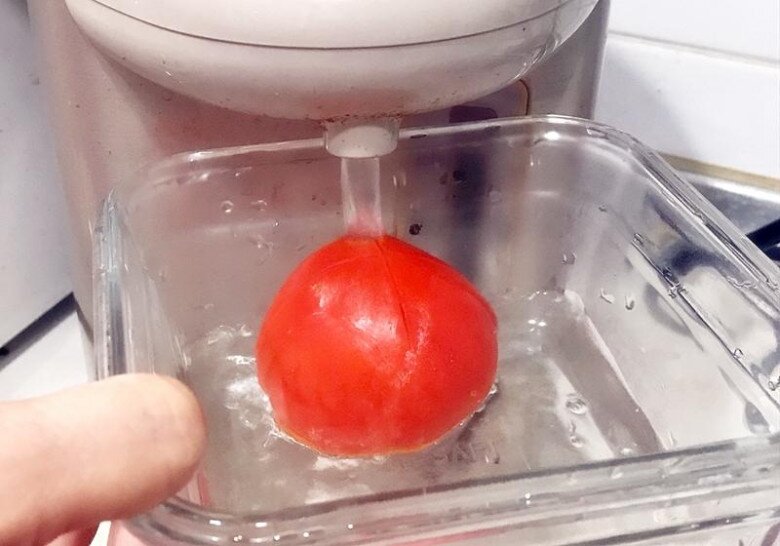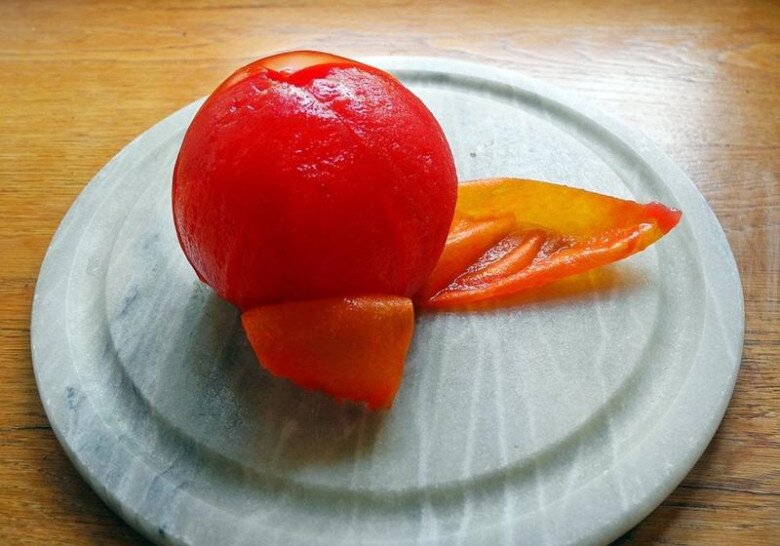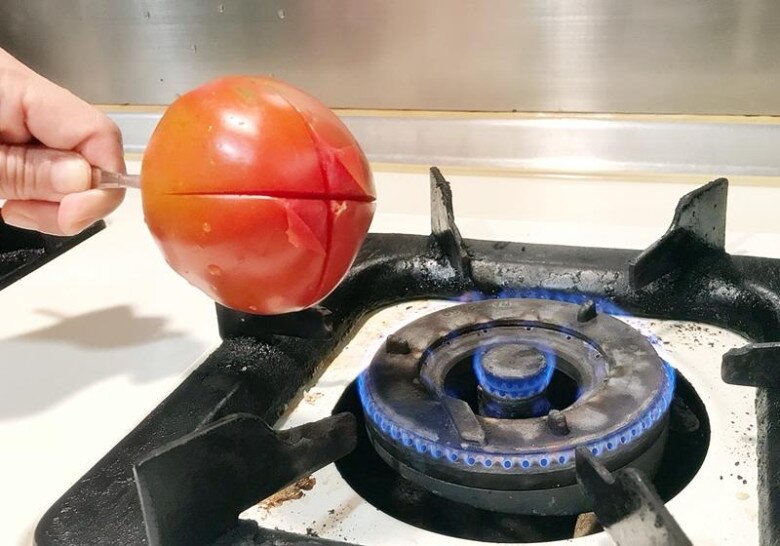1. Should You Peel Tomatoes?
When You Don’t Need to Peel Tomatoes:
– For raw dishes such as salads, burgers, or sandwiches, or grilled dishes like pizza toppings and oven-baked meals, leaving the skin on keeps the tomato firm and prevents it from turning mushy.
– When grilled to perfection, the tomato skin imparts a unique flavor and aroma to the dish.

– Additionally, tomato skins are rich in antioxidants like flavonol and lycopene, known for their potential health benefits, including reduced risks of certain types of cancer and cardiovascular diseases.
When You Should Peel Tomatoes:
– For dishes that require a smooth texture, such as tomato sauce, purées, stews, or soups, peeling the tomatoes is recommended.
– The tomato skin can be slightly tough and impart a bitter taste, affecting the overall smoothness and flavor of these dishes.

2. Traditional Method for Peeling Tomatoes
– Select two ripe tomatoes and give them a good wash.
– Using a sharp knife, carefully make a small cross-shaped incision at the bottom of each tomato (about 1 cm) to help ease the peeling process without losing too much juice.
– If the stem seems difficult to remove, you can also make a square incision around it.
– Bring a pot of water to a rolling boil and gently drop the tomatoes into the water, stem-side down. Let them cook for about 20 seconds, then flip them over and cook for an additional 10 seconds.
– Immediately plunge the tomatoes into ice-cold water to halt the cooking process and make the skins easier to remove.
– The cold water helps retain the tomatoes’ moisture, and the contrast between hot and cold makes the skins loosen and peel off effortlessly.

3. Three Alternative Ways to Peel Tomatoes Without Boiling Water
Using Hot Water from a Kettle
– Make a small cross-shaped incision at the bottom of each tomato and place them in a heat-resistant bowl (stainless steel, ceramic, or glass).
– Pour boiling water from a kettle over the tomatoes and let them sit for 3-5 minutes. Then, remove them from the hot water, rinse under cold water, and peel off the skins.
– For cherry tomatoes, a shorter soaking time of 2-3 minutes is sufficient.

Using the Freezing Method
– This method is ideal when preparing sauces, soups, or dishes that require softer tomatoes.
– Place the whole tomatoes (stems removed) in a plastic bag and store them in the freezer.
– When needed, take them out and soak them in cold water for about 5 minutes before easily peeling off the skins.
– Frozen tomatoes can also be added directly to soups or sauces, as they tend to soften and break down faster during cooking.

Using a Flame
– Make a small incision in the skin of each tomato and hold them over the open flame of a gas stove, keeping a distance of about 3 cm.
– Rotate the tomatoes frequently to ensure even heating and allow the skins to char and blister. Then, dip them in cold water and peel off the skins.
– Some sources suggest using a spoon to scrape off the tomato skins, but this method can be time-consuming and may result in a messier process compared to the blanching technique.

4. Making the Most of Tomato Skins
Don’t discard those tomato skins! Here are some creative ways to utilize them:
– Enhancing Stock: Sauté tomato skins in olive oil to release their lycopene content. Remove the skins and use the infused oil to add depth of flavor to your stocks.
– Creating a Flavorful Salt: Spread tomato skins on a baking tray lined with parchment paper. Sprinkle with salt and your choice of spices, then dry them in the oven. Finally, blend the dried mixture into a flavorful tomato salt that can elevate both European and Asian dishes.











